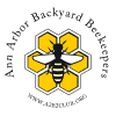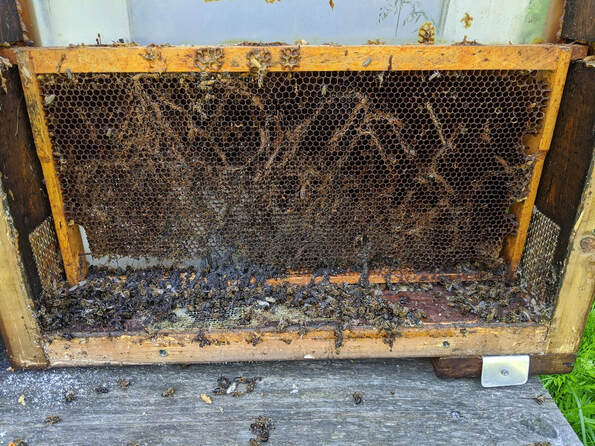 Achroia grisella (The Lesser Wax Moth) As I’ve said before, wax or comb is an invaluable source for a beekeeper. One of the challenges that faces a beekeeper is how to store this precious resource in order to preserve it for use in future hives. Two factors to consider for frame storage are moisture which can cause frames to mold and most importantly wax moths. As hive beetle larvae can destroy improperly stored frames of honey, wax moths and their larvae can destroy all frames containing comb, though they show a preference for older, darker comb that has contained brood. Best There are two ways to store comb that are more successful and full-proof ways to prevent wax moth damage. The best way to store wax frames is in a freezer. This not only kills wax moth eggs that are present in all comb that has been inside a hive for any length of time, but will also protect the comb from pests such as mice and from mold. Unfortunately, most beekeepers do not possess large enough freezers to hold all of their excess comb. In this case, the second-best method of storage is to stack boxes of frames such that they are protected from pests (i.e. with a telescoping outer cover on the bottom and top of the stack), and to apply moth crystals (or Para-Moth, NOT MOTH BALLS) according to the label. Crisscross The two easiest ways to store frames of wax do not require a freezer or the purchase of chemical treatments, but are sometimes not as successful. The first is to store the boxes containing the frames in an open-air structure (for ventilation), on their sides (so that sunlight and air flow may penetrate between the frames), and in a crisscross pattern (with each box facing ninety degrees to the one above and below). Wax moths do not like light or the flow of air, so this storage will help deter them, though may not work for frames containing darker brood comb. The final way to store frames is to place the boxes of comb on strong hives that will be able to patrol the comb and keep the frames free of wax moths. With this final method, a beekeeper should check the storage hives about every week or so to make sure they are still strong and that wax moths have not moved into the frames of the stored boxes. More Information: https://www.honeybeesuite.com/how-and-where-should-i-store-empty-supers/ https://glorybee.com/blog/top-3-ways-to-prevent-wax-moths/
1 Comment
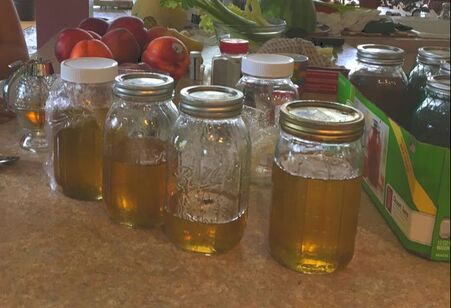 Amazing Honey has many amazing properties. At the proper water content, honey that has been properly stored will never expire or go bad. In fact, honey that has been recovered from Egyptian tombs and is over 2,000 years old is still edible. One of the reasons for this longevity is that honey is antimicrobial, meaning that organisms such as bacteria and fungi do not live and grow in honey (the one exception to this is botulism spores). Three factors that make honey antimicrobial are 1) the fact that it is slightly acidic, 2) that it is a supersaturated solution, and 3) that it contains compounds such as hydrogen peroxide. Honey has been used for thousands of years medicinally to aid in wound and burn healing. Blend Bees make honey during the spring, summer, and fall, but typically only consume it during the winter and early spring, preferring to consume fresh nectar and pollen in the form of bee bread (pollen mixed with nectar or honey) during the honey flow. Honey can be thought of as nectar that has been processed for long term storage. Unlike when bees store the pollen from multiple species of flowers in the same cell, bees only store nectar from the same species of flower in the same cell. Also, honey bees typically store all the nectar obtained from a single floral source in the same area of the hive or same frame. This results in different colors of honey depending on the floral source and different varieties of honey (ex. clover honey vs orange blossom honey). Crop Though I think it’s funny to think of honey as bee vomit, honey is actually the substance produced by bees when regurgitated nectar from their crop (or honey stomach) is exposed to the enzyme invertase produced by the bee’s salivary gland which converts the sugar sucrose from nectar into glucose and fructose. The liquid honey which is now made up of glucose and fructose is stored in the wax cells of the hive and dehydrated by the bees until its water content is at or below 18.6%, at which point the wax cells are capped. More Information: https://honey.com/about-honey/how-honey-is-made 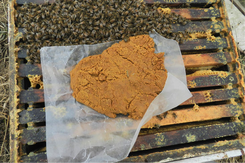 Aware As a beekeeper, it is often said that you also have to become a botanist and a meteorologist so that you not only know what is blooming in your immediate area and when it is blooming, but also to know your local weather patterns so that you are aware of situations that may prevent your bees from accessing what is in bloom. Both the plants available for your bees and weather conditions during the year are hyper localized based on a number of factors including geography and whether you are in an urban, suburban, or rural area. What is blooming in your area in early May is likely very different from what is blooming just a few miles down the road. It is important to keep this in mind to know when your colonies need to be fed. Bloom Honey bees get all of their nutrition from flowers, so when there are no plants in bloom, bees must rely on either their food stores or the beekeeper to survive. When there are no nutritional resources available in the environment, this is called a dearth. Typical times for a dearth in MI are the winter, late summer, and late fall, but there can also be a kind of dearth in the spring if the weather is too cold and wet for bees to access the blooming trees, shrubs, and plants. Concentration The 2 nutritional sources for bees are pollen and nectar. Beekeepers may need to feed either pollen, pollen substitute (a protein rich fake pollen), or pollen supplement (a protein rich substance containing some real pollen) in times when pollen is scarce but the bees are rearing a lot of brood, like in the springtime. Some beekeepers will also feed 1:1 sugar syrup as a nectar substitute in the spring until the bees stop taking it which indicates they are getting adequate nectar from the environment. Typically, 2:1 sugar syrup is fed if there is a fall dearth to help bulk up winter honey stores. Since bees will not take sugar syrup in the winter, many beekeepers put dry sugar or fondant in their hives over the winter to ensure their bees won’t starve. NOTE: Never feed sugar syrup with honey supers on. This will lead to sugar syrup “honey.” More Information: https://pollinators.msu.edu/resources/beekeepers/feeding-honey-bees/ 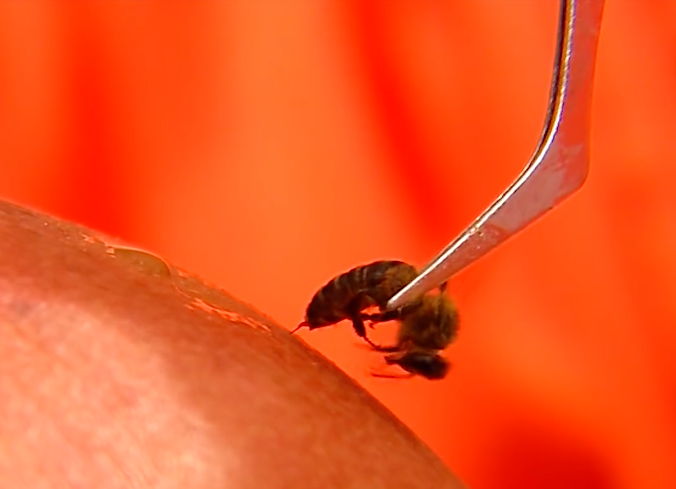 Apitherapy Apitherapy is using the products of a honey bee colony for therapeutic purposes. Humans have been doing this for thousands of years, and some apitherapy, like the use of honey to heal wounds and burns and soothe sore throats, has been scientifically proven effective. Also, the use of bee venom in immunotherapy to protect people allergic to bee stings from having an anaphylactic reaction when stung is a medically sound therapy and invaluable to bee sting allergic beekeepers. Beeswax is also used in many protective skin products like lip balm and lotion. Benefits? Other components of a honey bee hive that have been used to prevent or treat ailments do not have many peer-reviewed clinical studies to support their claims. Though many people anecdotally report a wide variety of health benefits from the ingestion or topical use of pollen, propolis, bee bread, and royal jelly. Caution should be exercised in use of these products, particularly in those people with pollen or bee venom/sting allergies. Controversial The most controversial form of apitherapy is bee sting therapy or bee venom therapy used not in the context of bee allergy immunotherapy. Bee sting therapy has been reported to treat a variety of diseases including arthritis, Lyme disease, multiple sclerosis, lupus, Parkinson’s Disease, and possibly some forms of cancer, but reliable scientific backing of these claims is sparse. In fact, bee sting therapy has been shown to actually cause autoimmune disease symptoms in some individuals. Because not all of the components of bee venom are well studied or even known, and because each bee’s venom sac contains a slightly different amount and mixture of these components, there are serious risks to bee sting therapy. These risks include, but are not limited to, organ failure and death. Bee sting apitherapy should not be attempted lightly, by anyone who is not a trained professional, without access to an Epipen, or without immediate access to proper medical intervention should a severe reaction occur. More Information: https://www.bbc.com/news/health-43513817 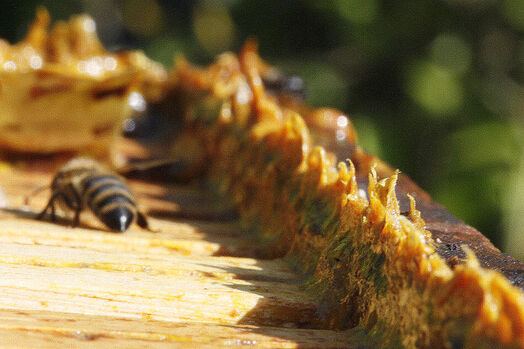 Antimicrobial Propolis is a sticky substance made from the resin of certain trees. It is found inside honey bee hives coating the walls and sealing gaps. It not only helps to make the hive waterproof and airtight, but also is antimicrobial, acting as part of the honey bee super organism immune system. Some people take propolis orally (usually in a capsule or tincture) in the hopes that it will boost their immune system. Unfortunately, there is not much hard science to support this practice. Better Studies have shown that honey bee colonies that collect and use more propolis in their hives have lower incidence and better recovery from diseases like American Foulbrood (AFB), chalkbrood, and Nosema. Unfortunately, because it is sticky and makes it hard to inspect hives, beekeepers have been actively breeding out bee strains who collect and use lots of propolis. This, along with Varroa mites, may be one reason for the current high rate of colony loss. Cottonwood The trees that honey bees collect propolis from most often in Michigan are poplars and cottonwood trees. If bees do not have access to these trees, they may collect other sticky substances such as asphalt. Bees who collect propolis will only forage for propolis and never for pollen, water, or nectar. The resin is stored in the forager bee’s pollen basket, but when she returns to the hive, she will require another bee’s help to bite away the collected resin. More Information: https://www.youtube.com/watch?v=Xsj8mB4KKZs 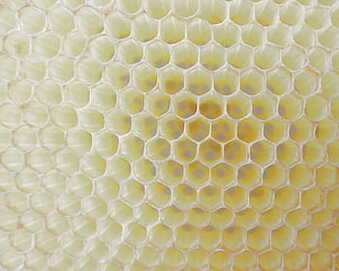 Adolescent Bees need three things to produce comb: 1) Lots of worker bees of the proper age (adolescent bees that have just finished their nurse bee duties), 2) Warm weather/proper time of year (bees will not produce wax in cold weather or during a dearth or when they are storing honey for winter), 3) Lots of fresh nectar or sugar syrup (it takes roughly 7lbs of honey to produce 1lb of wax)! Bees produce tiny flakes of wax from glands on their abdomens. Bigger, well-fed colonies with more bees will produce more wax. Build Bees need someplace to put the wax and build their comb. Most beekeepers place foundation inside their frames to aid the bees in building sturdy, straight comb with cells of the proper size. Foundation is a 2-dimensional template with cell outlines stamped on it. It can be made of wax or wax-coated plastic. When you reuse plastic frames, you may have to recoat them with wax. Some beekeepers use foundationless frames. While bees will build wax in these frames, the comb will be delicate, hard to handle, and impossible to extract without destroying it. Also, it will be difficult to prevent crooked comb or cross-comb (sideways comb connecting 2 frames together) which will ruin the comb when the frames are pulled apart. Crucial Honey comb or wax comb is incredibly important to a honey bee colony and a fundamental resource for the beekeeper. Bees raise brood and store food in the comb, and cluster and communicate on the comb. A colony cannot function without drawn comb. Drawn comb refers to 3-dimensional beeswax with hexagonal cells. Comb doesn’t last forever and old, dirty, dark comb should be rotated out of the hive every 3-5 years because it is full of dirt, debris, and absorbed chemicals like pesticides. More Information: https://www.honeybeesuite.com/the-conditions-necessary-for-comb-building/ 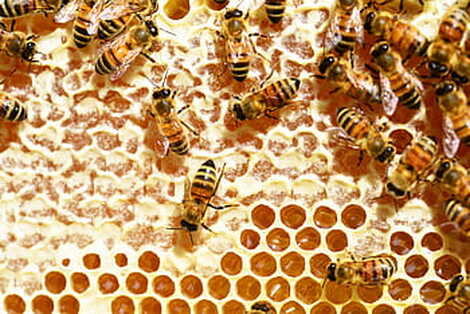 Alteration The receiver bee takes nectar from the forager bee and transfers it mouth to mouth to other bees, adding an enzyme called invertase (sucrase) in the process which breaks the sucrose in the nectar down into fructose and glucose, and dehydrating the liquid down to roughly 18-20% water. The nectar is now honey and the bees will deposit it into a cell and cap it with wax. Sometimes the bees will store the nectar in cells before drying it out. Unlike with pollen, each nectar/honey cell is filled only with honey or nectar collected from the same species of plant. Barf Forager bees collect nectar by sucking it up with their proboscis into their honey stomachs (crops), and bring it back to the hive. When a nectar forager returns to the hive with a honey stomach full of nectar, she signals other bees to receive that nectar and fills the receiver bee’s honey stomach via trophallaxis or the regurgitated exchange of liquid. Carbohydrates Nectar is a sugary liquid excreted from the nectary of flowers to attract pollinators. It is the main source of carbohydrates for bees and also may contain very small amounts of vitamins, minerals, and other micronutrients. More Information: https://honeybee.org.au/education/wonderful-world-of-honey/how-bees-make-honey/ 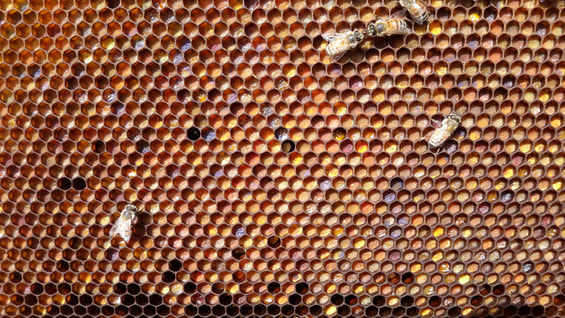 Anther Foraging bees get pollen all over their bodies as they collect it from the anther of the flower and store it in their corbicula or pollen basket located on their hindmost legs. They will also get some pollen on them when foraging for nectar in the flower. Tiny hairs all over the bee’s body and static electricity help to adhere the pollen grains to the bee. Since bees typically only forage from the same species of plant on each foraging trip (floral fidelity), they end up providing the plant with the valuable service of pollination by transferring the pollen from the anther (male organ) of one flower to the stigma (female organ) of another flower while foraging. Bread Pollen is the “sperm” of plants and is the honey bee’s source of protein, lipids, some vitamins and minerals, and micronutrients. The pollen is mainly consumed by bee brood and the nurse bees who produce protein-rich royal jelly from the hypopharyngeal glands in their heads. Pollen is made into bee bread in the hive by mixing it with honey and allowing some fermentation to occur. Making the fresh pollen into bee bread allows it to be stored for a longer period of time. Fresh pollen will get moldy and lose its nutritional value quickly. Bees prefer fresh pollen to old pollen and will “entomb” old, gross pollen with propolis and never go near it again. Frames of entombed pollen should be culled. Corbicula Bees will store the pollen from multiple different plant species together in the same cell. The pollen foragers empty their pollen baskets into the cell with their front legs and then pack the pollen down into the cell with their head. The pollen is normally stored right next to the brood or on frames close to the brood chamber. If the colony is suffering from a pollen dearth, the larvae will look dry and clear rather than plump and white and the liquid around them will also be clear instead of white. Some beekeepers feed dry pollen substitute or pollen patties (made from other protein sources like soy flour or skim milk) in the spring or during a pollen dearth. More Information: https://edis.ifas.ufl.edu/publication/IN868 |
AuthorJen Haeger is a new master beekeeper and board member of A2B2. Archives
August 2022
Categories
All
|

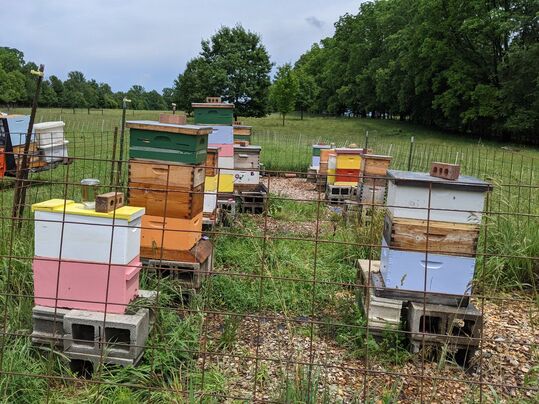
 RSS Feed
RSS Feed
